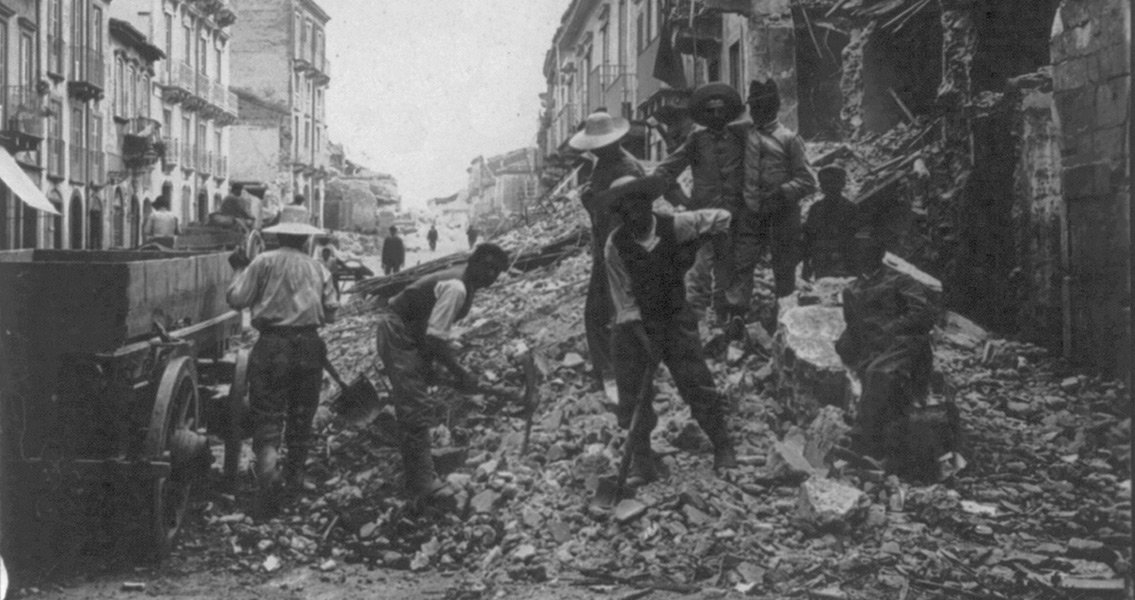
Sicily earthquake 1908
Completely flattening the cities of Messina in Sicily and Reggio di Calabria on the Italian mainland, the most devastating earthquake in recorded European history struck on 28th December, 1908.
The horrifying earthquake started at around 5am in the Straits of Messina. It is estimated that the earthquake and ensuing Tsunami killed between 100,000 and 200,000 people. Along with the two cities devastated by the quake, dozens of smaller coastal towns were also severely damaged.Measuring 7.5 on the Richter Scale, the main shock of the earthquake triggered a 40 foot high tsunami which smashed coastal towns on both Sicily and the Italian mainland.In the days following the 28th December hundreds of smaller tremors exacerbated the situation, causing more damage and severely hampering relief efforts to the worst affected areas.
Although by far the most devastating earthquake to strike Sicily, the area had long been a hotbed of seismic activity. The island is close to the spot where the African and European tectonic plates collide, making it a volatile location. Periodic seismic events have led locals to refer to Sicily and Calabria as 'la terra ballerina', which translates to the "dancing land".
In 1693, an earthquake struck the region which is estimated to have killed around 60,000 people. In 1783, Sicily endured another violent earthquake which is believed to have killed around 30,000 people. It heralded the start of a 125 year period which witnessed another twenty major earthquakes.Nevertheless, none of the periodic quakes in the years following 1783 had proven particularly deadly, and the population of Sicily rose to around 3.8 million people by 1900. 150,000 of those lived in Messina, the city closest to the epicentre of the 1908 Messina Earthquake.
On the night of the 27th December, 1908, the city's population swelled as its hotels filled up with visitors to a performance of the opera Aida.
The 35 second long tremor early the following morning sent a massive tsunami 100 yards inland, immediately leading to hundreds of deaths as buildings collapsed.90% of the buildings in Messina and Reggio di Calabria (the city on the other side of the Straits of Messina) were wiped out. Gas, electricity and water supplies to the cities were cut off, further fueling the chaos of the earthquake's aftermath. It took a week for the Italian government to officially respond to the disaster, with martial law and a state of emergency only finally being declared on 9th January.
The Red Cross provided around $1 million in aid to supporting the earthquake victims, with survivors being pulled from the ruins up to eighteen days after the quake. Tragically, the constant hazard of collapsing buildings saw many rescuers killed as they attempted to provide assistance.
An insight into the devastation caused by the 1908 Messina earthquake, and the inability of local infrastructures and governments to cope, can be seen in its long term effects. Fifty years after the quake, 10,000 people in Messina were still forced to live in temporary housing, having lost their homes in the earthquake. Meanwhile, refugees were transported abroad, forced to seek new lives elsewhere in Europe, and as far away as the USA.
Nature is gives many benefits to human beings. If man disturbs the nature, then it will take revenge. So don’t think nature is always silent.
In India, Gujarat state also affected in earthquake and in 2004 many coastal area affected in Tsunami.
[Link]